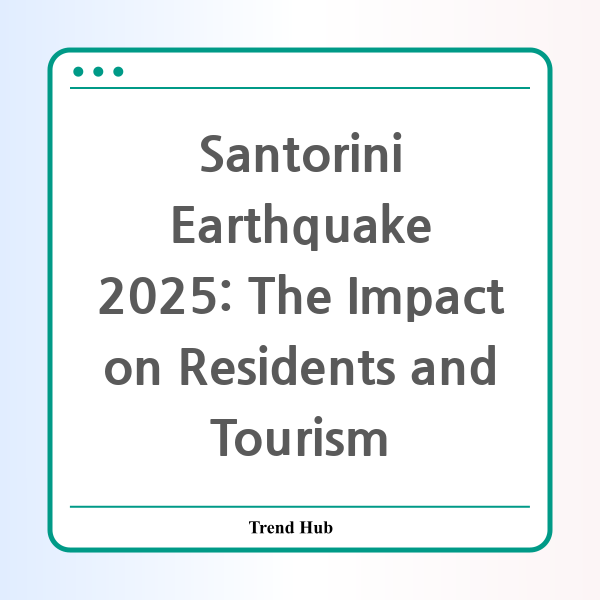* This website participates in the Amazon Affiliate Program and earns from qualifying purchases.

As thousands flee the beautiful island of Santorini due to a surge of earthquake activity, this stunning tourist destination faces an unprecedented challenge. Known for its breathtaking sunsets and picturesque views, Santorini, officially named Thira, is currently grappling with a sequence of seismic events that have prompted a mass evacuation.
The Greek authorities reported that over 6,000 residents have left the island, seeking safety on the mainland amid fears that stronger tremors could follow. This wave of departures began as a series of earthquakes rattled the Aegean Sea, with a magnitude of 4.8 recorded early Tuesday morning. Just days earlier, a tremor measuring 4.9 struck, marking the most intense seismic activity the region has seen in decades.
According to reports, the quakes have not only affected the locals but also disrupted the island's thriving tourism industry, which attracts approximately 3.4 million visitors annually. The stark contrast between the island's typical bustling tourist life and its current deserted state is alarming. Hotels, once filled with vacationers, are now eerily quiet as tourists rush to evacuate.
The Greek government has responded proactively. Prime Minister Kyriakos Mitsotakis urged calm and assured residents that measures were being implemented to ensure their safety. Schools on the island have closed until further notice, and additional flights to Athens have been arranged to facilitate evacuations. Residents have been advised to drain swimming pools and avoid large indoor gatherings, focusing on maintaining safety until the seismic activity stabilizes.
Santorini, a popular Instagram destination, has historical ties to volcanic activity. The island's unique caldera was formed over 3,600 years ago following one of the largest volcanic eruptions recorded in history. While its last significant eruption occurred in 1956, experts emphasize that the recent earthquake swarm is not linked to volcanic activity but rather tectonic movements due to the island's position at the junction of the African and Eurasian tectonic plates.
Seismologist Gerasimos Papadopoulos has indicated that the ongoing seismic events suggest an intense pre-seismic sequence, warning that such sequences can last several months. Although it’s difficult to predict the exact magnitude of any future earthquakes, the high seismic activity observed raises concerns about potential disasters.
This situation stands in sharp contrast to the island's usual charm and beauty. Once a vibrant paradise for tourists, Santorini is now faced with the reality of geological forces that could alter its landscape and lifestyle for the foreseeable future. As residents and visitors alike seek safety, the future of Santorini as a top travel destination hangs in the balance.
As we monitor the developments on Santorini, it is essential to consider both the immediate needs of its residents and the long-term implications for its tourism industry. Recovery efforts will be crucial in the days and weeks to come. For now, safety remains the priority as the island continues to experience tremors.
* This website participates in the Amazon Affiliate Program and earns from qualifying purchases.